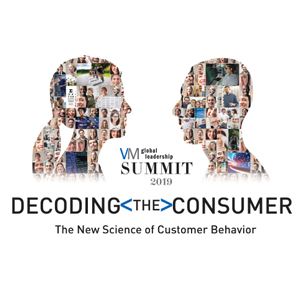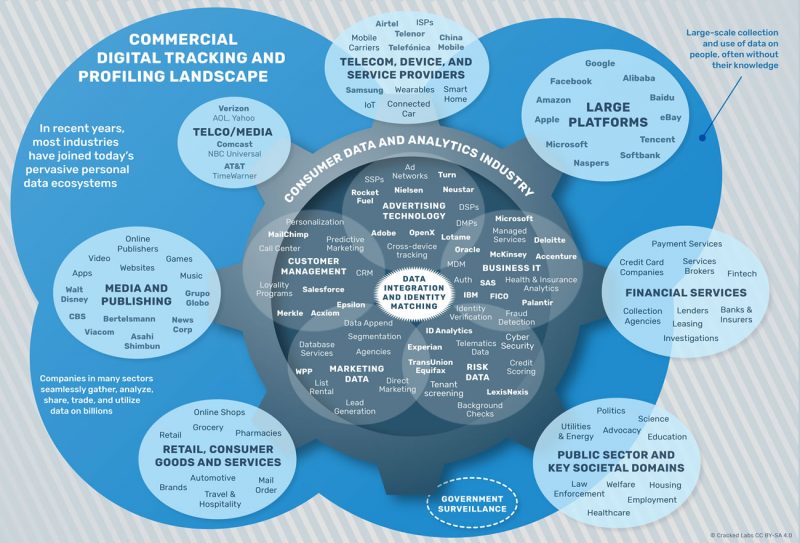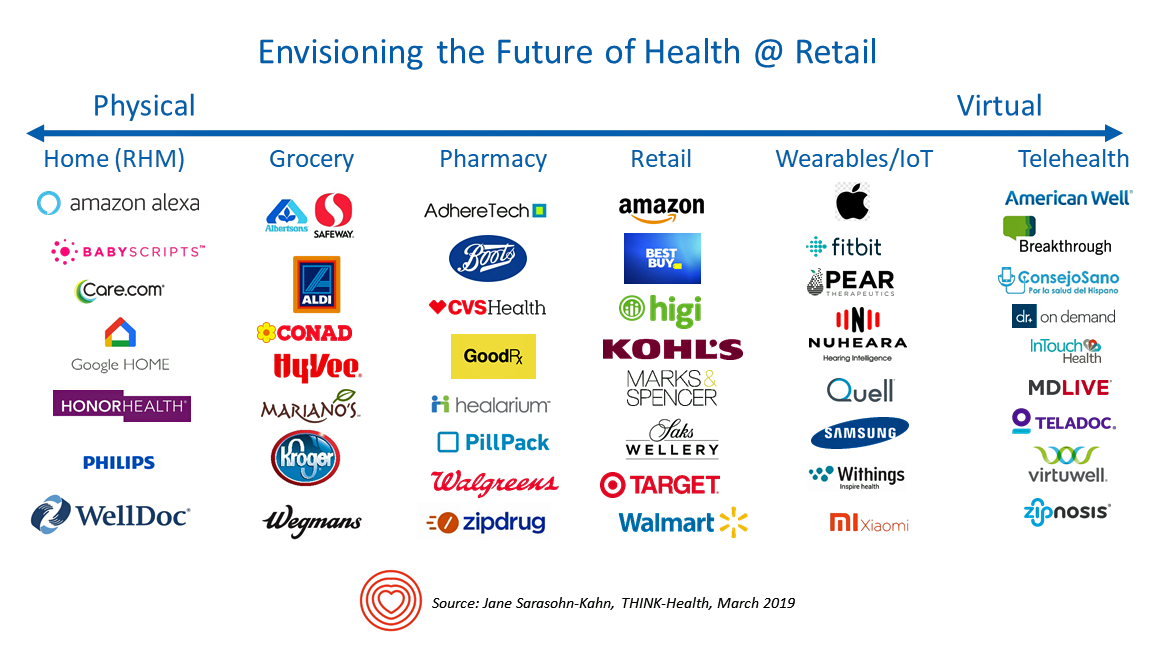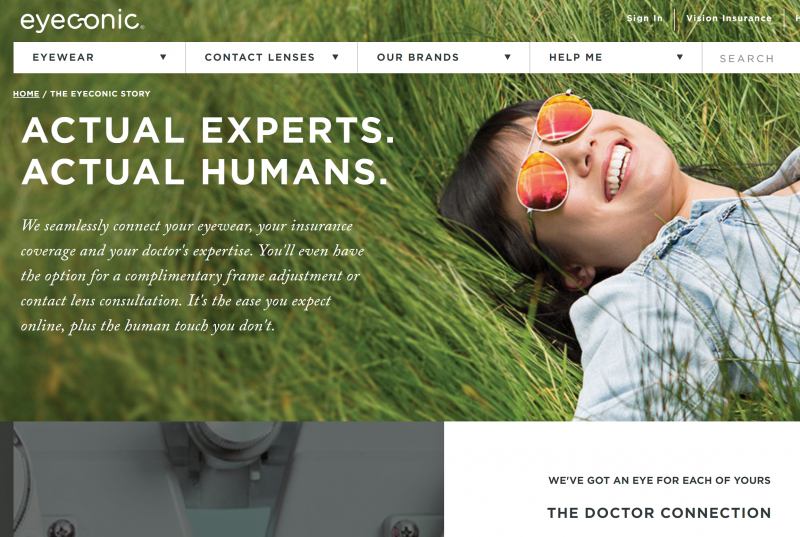The vision/optical industry is one piece of the health/care ecosystem, but the segment has not been as directly impacted by patients’ new consumer muscles until just about now.
 It feels like the vision industry is at an inflection point at this moment, I intuited during yesterday’s convening of Decoding the Consumer: The new science of customer behavior, the theme of the 13th annual global leadership summit hosted by Vision Monday, a program of Jobson Medical Information which is part of the WebMD family.
It feels like the vision industry is at an inflection point at this moment, I intuited during yesterday’s convening of Decoding the Consumer: The new science of customer behavior, the theme of the 13th annual global leadership summit hosted by Vision Monday, a program of Jobson Medical Information which is part of the WebMD family.
I was grateful to have an opportunity to share my views with attendees on the vision patient as health consumer through the health economic lens.
Marc Ferrara, CEO Information Services with Jobson, introduced the meeting with some context. The topic, “decoding the consumer,” was chosen as that vision patient, now consumer, has growing control over their experience – as they seek services for vision care and shop for products (lenses, eyewear, and supplies).
This is impacting optical retailers, from the corporate giants to the still-large presence of Mom-and-Pop brick-and-mortar storefronts in shopping strips, mega-malls, and even practitioners’ homes in exurban and rural geographies.
There’s a new data continuum with a shift in the relationship between the deliverers of services and their buyers. That data powers new relationships and programs, Marc explained.

He shared this image from Cracked Labs which illustrates the many data sources beyond the legacy health care claim that stakeholders can access and, if used for good, can benefit patient care and health outcomes.
Marc then presented an intriguing, if disturbing (to me), bar chart of “the future value of your data.” Globally, that calculated to a value of $2.36 per average internet user per month in 2025, $3.18 for the European citizen, and a whopping $9.82 for Americans. There are reasons underneath this value-calculation I’ll address in another post: top-line for me is Americans’ lack of comprehensive data privacy protection and lack of opt-in to data collection in everyday life (addressed in the concluding Hot Points, below).
In addition to the “data is the new oil” mantra, Marc noted the growth of omnichannel in retail that has begun to re-shape the consumer-facing optical industry. Over one-half of 213 retail chains listed in Internet Retailers top 1000 offered “buy online, pick up in store” fulfillment in 2018. Walmart, in particular, had a huge uptick in this during the 2018 holiday shopping season.
Marge Axelrad of Jobson then set out the agenda for the day, asking one of the day’s big questions, “Can experience and data co-exist?” She said, “of course it can,” as the day’s content proved out.
”We’re a little bit value and a little bit luxury” these days, Marge observed.
“Data and tech can re-define new experiences,” she said. We’re relying on technology to help us learn about what best works for consumer experience. And that’s true for health care as well as generic retail, Marge asserted, introducing Deborah Weinswig who is CEO and Founder, Coresight Research. Deborah spends one-third of her time in China, these days, and gave us the benefit of her learnings from Asia and retail innovation.
Technology is re-shaping physical retail, from Tiffany and Nike to retail pharmacy. Tech integration in the store and via e-commerce is changing the customer experience — and experience is table stakes now to keep the consumer’s loyalty, which is increasingly fleeting.
Here, Deborah’s concept of “boundaryless retail” will be quite relevant for health/care stakeholders, as the consumer can and will seek health everywhere – at home, on the go at grocery stores and workplaces, in their cars…omnichannel beyond (but including) media platforms.
Frictionless retail is also an important paradigm for health care, an industry rife with friction. A huge friction point we identified in our data-for-healthcare-good panel wrapping up the day is surprise medical billing due to patients’ unwitting use of out-of-network physicians and providers. Blockchain is proving to be a sound, effective use-case for keeping provider directories and credentialing up-to-date.
And that will enhance patient/consumer health experience and loyalty.
AI underpins all retail experience now – which is something we’re hearing in healthcare whether at HIMSS, CES, SXSW, ePharma, and other conferences since the start of 2019.
My talk was next up, as I presented the evolving retail health/care ecosystem landscape and the growing role of the patient-as-payor.

Andy Karp of Jobson kicked off the afternoon’s content which focused on data and technology. When Andy spoke of us all being part of the “digital nation” as “digital citizens,” his remarks resonated with me. “We are all part of the digital nation….we pledge allegiance to the digital nation several times a day,” he waxed lyrically. “The only passport we need is a smartphone.”
That means we need a code of data ethics, and for that Andy cited Accenture’s report on Building Digital Trust with 12 principles for using data for good.
A panel on the promises of blockchain technology for health care brainstormed how to make data more transparent, more secure, and more accessible for everyone in the data sphere, with Jill Malandrino of NASDAQ parrying with Janine Grasso of IBM’s blockchain team, and AdventHealth’s CTO Roger Smith bringing his in-depth health system knowledge to the insights.
I believe that the health care industry can learn from IBM’s “journey of a mango from farm to retail,” as Janine described, using blockchain to trace a food chain from farm to fork. Her experience in the early days of blockchain-building across all industries is that 20% is the hard initial work, but 80% of the project is convening the network to agree governance and incentive structures.
IBM is building a Health Utility Network which includes Aetna and Anthem, among other partners, to use for credentialing, claims processing, and other services.
Dr. John Whyte, Chief Medical Officer with WebMD, spoke about how people use the internet for health care search. As a Board Certified Internist, Dr. Whyte speaks as both a front-line health care provider in Washington, DC, as well as through his lens on the inside of WebMD, still among the most-trusted healthcare information portals: one in four U.S. adults uses WebMD each month, and the site is #1 in reach for the top 50 diagnosed conditions, he noted.
It’s also the #1 health site for eye glass wearers 25-54 years old. Over 20 million info seekers on WebMD had an eye exam in the past twelve months. Top search terms for vision/optical information were for dry eye (39%, and weighted toward women seeking this answer), astigmatism (34%), myopia (29%) and floaters/flashes (24%).
People have a lot of curiosity about eyes, John observed — what does an eye color say about one’s health? How can I banish bags from my eyes? What causes eye pain? The questions are many and varied and curious.
No health conference is well-curated in 2019 without some discussion on the growing role of voice tech, and Dave Bovenschulte, VP Strategy with Klick Health, and Justine Santa Cruz, SVP with Satisfi Labs, brought their deep knowledge to the topic. Their remarks informed our last panel session on turning data wealth into patient health.
Amy Heymans (Cueva), founder and leader of Mad*Pow (one of my own go-to health/tech designers) spoke on design for health care, patient engagement and behavior change; and John Ryan, General Manager of UnitedHealthcare Vision spoke of his organization’s strategic use of data in patient care programs for vision health.
Our end-of-day panel featured Dr. Whyte and me synthesizing the findings of the day on how health care and, especially, the vision/optical industry, can leverage data to benefit patient care and health. The elephant in the room all day, I felt and said, was privacy — or lack thereof. While Europeans in the room — remembering two of the major sponsors of the meeting were Essilor (based in France) and Luxxotica (based in Italy) — are covered by the GDPR for privacy of personal data, Americans are barely covered by a patchwork privacy quilt of HIPAA, GINA, COPPA (for children online), and other bits of policy. But the non-traditional data bytes (detailed in the Cracked Labs graphic above) that industry, and especially retail at large, are mashing up aren’t usually covered by HIPAA, unless they reside in HIPAA-covered entities’ information systems.
Our group-of-seven crowdsourced the importance of trust, transparency, and data stewardship to ensure that the patient-as-health-consumer and, ultimately citizen (in my own view) benefit from sharing data. Without these values and an ethical data framework, people won’t fully engage in health care…to the detriment of individual and public health.
Health Populi’s Hot Points: As experience and service become mantras in health care @ retail, it’s useful to call out a recent announcement from VSP, among the largest eyecare insurance providers.
 You know about CVS buying Aetna late last year, bringing together the pharmacy-cum-healthcare services operation with a health insurance plan.
You know about CVS buying Aetna late last year, bringing together the pharmacy-cum-healthcare services operation with a health insurance plan.
Now consider a vision/optical insurance plan entering the retailing side of the business. This is the news coming from VSP, one of the largest providers of vision insurance covering 88 million members, launching its retail optometry business cleverly named Eyeconic.
In their online story, they tout the tagline, “Actual Experts. Actual Humans.”
Check out the lower right portion of the website snippet: “We’ve got an eye for each of yours…The Doctor Connection.” A key message of Eyeconic is their value proposition of connecting you, the patient-consumer, with a real-living doctor, not a chatbot, an app, or virtual human.
As I reflected on Eyeconic and what it means for the vision consumer, I told the group about Dr. Eric Topol’s latest book, Deep Medicine (reviewed here in Health Populi). The tag line of the book is how AI can help humanize health care.
The message here that Eyeconic has adopted meshes with Dr. Topol’s view that AI is key to helping humanize health care — but to complement and enhance the provider’s ability to spend quality time in partnership with patients.




 Thank you FeedSpot for
Thank you FeedSpot for